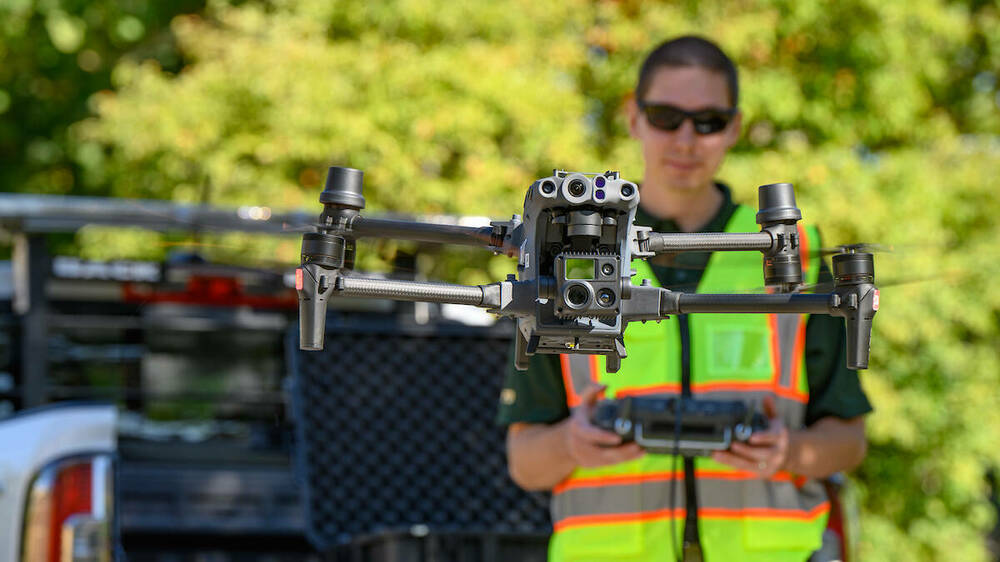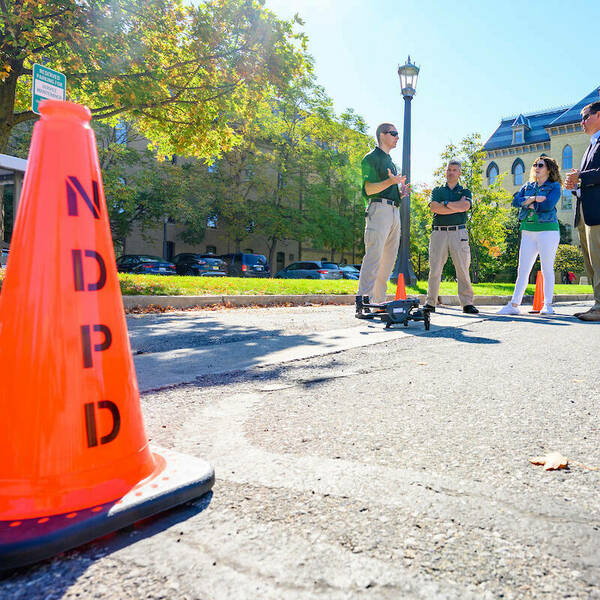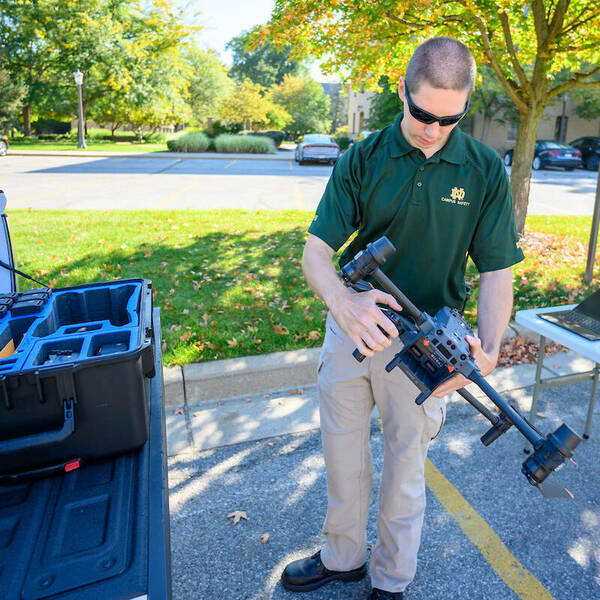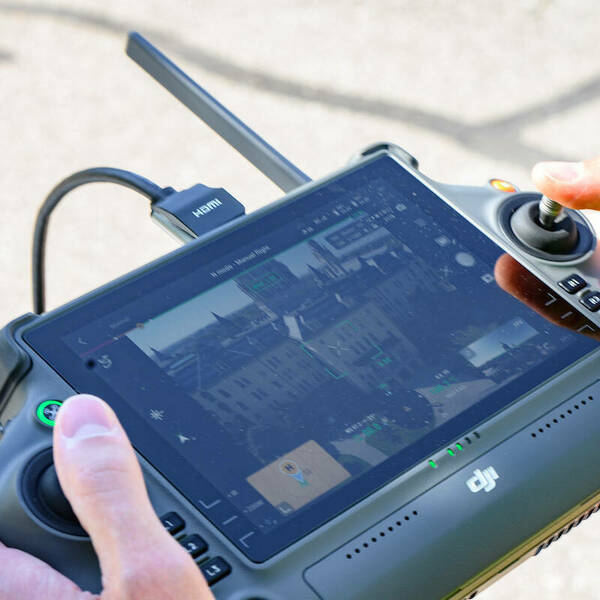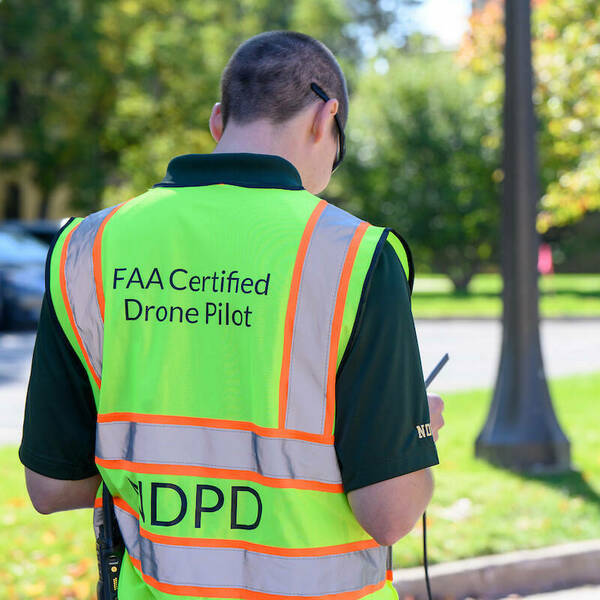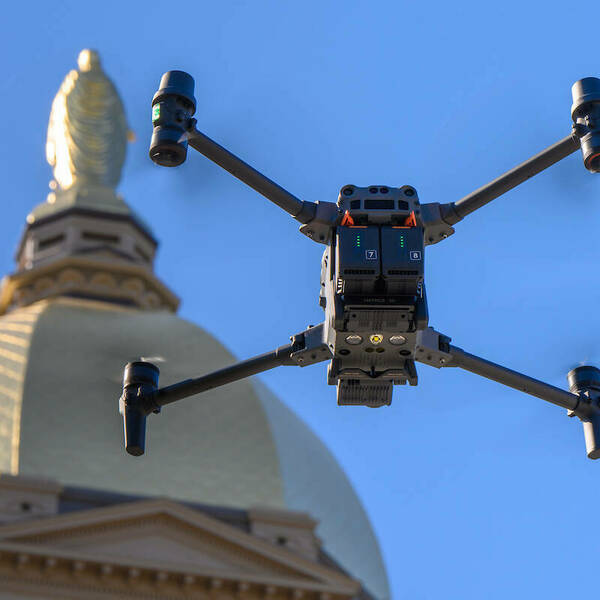It’s not a bird, or a plane … but there are new eyes in the sky you may notice if you find yourself on campus for this weekend’s final home football game of the season.
The Notre Dame Police Department began using drone technology to monitor gameday traffic in September, and, as the season comes to a close, the department has experienced success in implementing this additional technology with its already extensive safety protocol.
“The addition of drones for football games has been very beneficial. The drones can be deployed quickly and have provided very useful information needed to make informed decisions about traffic management,” Deputy Chief Keith Kopinski says.
Until this year, NDPD used a helicopter to monitor traffic on gamedays. That tool is still very much in play, but is now reserved solely to monitor post-game traffic along with the drone. Think of it as an additional defensive back. While personnel in the command post at the stadium have constant communication with the helicopter while monitoring traffic, the drone gives the added dimension of allowing them to view the traffic from the eye of the drone.
“Drones allow us to check areas that are difficult to see or access, so we can maintain a safe campus from the ground and air,” Austin Galletti, the lead drone pilot for NDPD, says.
Galletti works as part of the closed circuit TV unit. After spending seven years in the department, he went through extensive training to obtain his FAA license and drone pilot certification. You might see him in a bright yellow and orange safety vest on Saturdays, at the controls of one of the NDPD drones. Because outside drone use is prohibited on campus, licensed drone pilots from the University wear an identifiable vest when flying on campus.
“Flying for the night games involves using anti-collision lights and a thermal camera. Video from the drones is livestreamed to the stadium command center for police and fire administrators to view,” Galletti adds.
“We began researching drones as a public safety tool some time ago, because we believed using a drone to monitor traffic could make us more efficient and help us make decisions related to traffic in real time,” Kopinski says.
Kopinski’s research included benchmarking with numerous other universities with established drone programs, specifically Big Ten and ACC schools with which Notre Dame has a history of collaboration.
“Indiana University was especially helpful during the benchmarking process,” Kopinski shares. “They led me to a drone provider that was extremely knowledgeable with the needs of public safety and the type of drones that would fit our needs. Although many universities did not yet have an established program, almost all of them had access to a drone for public safety or were in the process of purchasing one.”
The NDPD also had existing expertise on campus to draw from. Facilities Design and Operations has been using drones for campus projects for several years, and Kopinski says guidance from Senior Director of Construction and Quality Assurance Tony Polotto was invaluable.
Fast forward to this fall: Campus Safety and University Operations now has four drones and nine certified operators between the NDPD and the Notre Dame Fire Department. Monitoring traffic is just one intended use. One of the drones, the DJI Matrice M30T, has thermal imaging, a speaker and a spotlight. That equips it for use in search and rescue operations, crime scene analysis and threat assessments.
Other drones can be used during fires to identify hot spots. The drones can also assist Emergency Management during response and recovery operations, such as damage assessments after a severe weather event. The multiple uses and increased efficiency are quickly making drone technology a crucial tool for campus teams dedicated to keeping members of the campus community— and visitors to Notre Dame — safe.
“The drones have many uses, but assisting in the safety of our community is the key function,” Kopinski says.
Photo by Matt Cashore/University of Notre Dame
